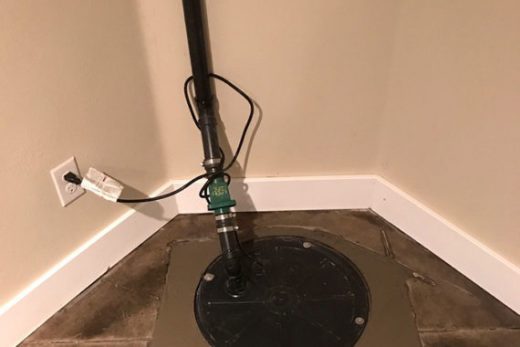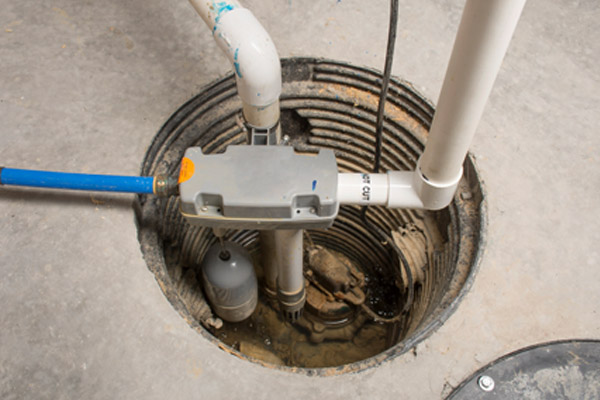Effortless Methods for Taking Care of a Sump Pump
Effortless Methods for Taking Care of a Sump Pump
Blog Article
The content directly below relating to Steps to Cleaning Your Sump Pump Properly is exceedingly enjoyable. Give it a go and make your own personal conclusions.

Sump pumps are crucial parts in many homes, specifically in locations vulnerable to flooding or extreme moisture. They assist avoid water damage by efficiently removing excess water from cellars or crawl spaces. Nevertheless, like any other appliance, sump pumps require routine upkeep to guarantee they work properly when needed the most. Cleansing your sump pump is a crucial part of its upkeep, and understanding just how to do it appropriately can conserve you from expensive repair services and prospective catastrophes.
Intro
Keeping a clean sump pump is crucial for its correct performance and longevity. Disregarding this vital job can lead to clogs, malfunctions, and inevitably, water damage to your home. Consequently, learning how to clean a sump pump is essential for home owners that rely upon these gadgets to maintain their cellars dry and safeguarded.
Recognizing the Sump Pump
Before diving into the cleaning procedure, it's vital to have a basic understanding of just how a sump pump functions. Normally installed in a pit or basin listed below the basement floor, a sump pump consists of several essential parts, consisting of a pump, a float switch, and a discharge pipe. When water accumulates in the pit, the float switch turns on the pump, which then pumps the water out through the discharge pipe, far from the building's structure.
Indicators of a Dirty Sump Pump
Knowing when your sump pump requires cleaning is essential for avoiding possible malfunctions. Some typical indicators that indicate a dirty sump pump include odd noises throughout operation, lowered water flow, and visible particles in the pit. If you observe any one of these signs, it's essential to cleanse your sump pump promptly to prevent any type of further issues.
Getting ready for Cleansing
Prior to you start cleansing your sump pump, it's important to take some safety preventative measures. Start by turning off the power to the pump to stay clear of any type of electrical crashes. In addition, wear appropriate protective gear, such as gloves and goggles, to shield on your own from dust, debris, and prospective microorganisms.
Step-by-step Guide to Cleansing a Sump Pump
Shutting down the Power
Begin by detaching the power supply to the sump pump to avoid any crashes while cleansing.
Getting Rid Of Particles and Dirt
Make use of a bucket or a scoop to remove any visible debris, dirt, or debris from the sump pit. Dispose of the particles appropriately to stop it from blocking the pump or the discharge pipeline.
Cleaning up the Pump and Float Change
When the pit is free from particles, very carefully get rid of the pump from the pit. Examine the pump and the float switch for any type of indications of damage or wear. Utilize a soft brush or fabric to clean the surface areas and eliminate any type of built up crud.
Flushing the System
After cleaning the pump and float button, flush the sump pit with clean water to eliminate any type of staying dust or debris. This will certainly assist ensure that the pump runs smoothly and successfully.
Checking for Proper Performance
Before re-installing the pump, perform a quick examination to make certain that the float switch activates the pump correctly. Put some water into the sump pit and observe the pump's operation. If everything is functioning properly, you can reassemble the pump and reconnect the power supply.
Upkeep Tips to Keep Your Sump Pump Clean
In addition to routine cleansing, there are numerous maintenance pointers you can follow to keep your sump pump in ideal problem:
Final thought
Cleansing your sump pump is an essential aspect of its upkeep and makes certain that it operates successfully when you need it the most. By complying with the steps laid out in this overview and including routine upkeep right into your routine, you can expand the life-span of your sump pump and shield your home from water damages.
6 STEPS ON HOW TO CLEAN A SUMP PUMP PROPERLY
UNDERSTANDING SUMP PUMPS
Your sump pump plays a crucial role in protecting your home by managing and removing excess water. It primarily functions as a “shield”, guarding your basement against the damaging effects of water accumulation. The pump is housed in a sump pit in the lowest part of your basement, and its job is to pump out any water that collects there.
During heavy rainfalls or when snow melts rapidly, water can infiltrate your basement, posing potential risks like flooding, structural damage, and harmful mold growth. Here, the sump pump springs into action, pumping out the intruding water and directing it away from your home.
SAFETY FIRST
Before cleaning, remember to prioritize safety. Disconnect the sump pump from the power source to prevent any accidental electric shocks. Also, wear sturdy gloves to protect your hands from any sharp or dirty components within the pump.
REMOVE THE SUMP PUMP
After ensuring your safety, the next step is to remove the sump pump from its pit. Doing this might require careful maneuvering as you don’t want to damage any pump components. Once removed, clean the sump pit to remove any accumulated debris or sludge.
INSPECT THE PUMP
Inspect the pump for any visible signs of wear or damage. Check the power cord, float switch, and impeller housing. If any components look worn out or damaged, consider replacing them to ensure optimal performance.
CLEAN THE PUMP
Thoroughly clean the pump with warm, soapy water. Make sure to rid it of any dirt, gravel, or other debris that might impede its performance. You can use a toothbrush to clean the small, hard-to-reach parts of the pump.
REINSTALL THE SUMP PUMP
Reinstall the pump into the sump pit Make sure it’s positioned correctly to remove the water effectively Once it’s back in place, reconnect it to the power source TEST THE PUMP
Finally, pour some water into the pit to ensure the pump works correctly. It should start automatically and begin pumping out the water; if it doesn’t, check the power source and the positioning of the pump.
Remember, while cleaning your sump pump is an essential part of home maintenance, hiring a professional plumber for a thorough inspection and cleaning at least once a year is also important. This will ensure that your pump is in optimal condition, ready to protect your home from potential water damage.
BEST PRACTICES FOR CLEANING SUMP PUMP DISCHARGE PIPES
Regular Inspection: Regularly inspect your discharge pipes, especially during heavy rainfall or snowmelt periods. Look for any signs of blockage or damage. Early detection of problems can prevent serious issues down the line. Periodic Cleaning: Over time, sediment and debris can accumulate in the discharge pipes, impeding the flow of water. Regular cleaning helps keep the pipes clear and functioning efficiently. You can use a high-pressure water jet to effectively clean the pipes. Insulation During Winter: In colder climates, discharge pipes can freeze, blocking the outflow of water. Protect your discharge pipes from freezing temperatures by insulating them with foam pipe insulation. This will ensure the sump pump can continue to discharge water even in freezing conditions. Proper Positioning: The discharge pipe should be positioned to direct water away from your home’s foundation. Improper positioning can lead to water seeping back into the basement. Ensure the pipe is long enough and angled correctly. Installation of a Check Valve: A check valve prevents water from flowing back into your sump pit after the pump has pushed it out. Installing a check valve helps maintain the efficiency of your sump pump and reduces the risk of flooding. Minimize Pipe Turns: Every curve or turn in the discharge pipe can decrease the efficiency of water flow. By minimizing turns and bends in your discharge pipe, you can increase the efficiency of your sump pump. https://www.fullspeedplumbing.com/how-to-clean-a-sump-pump-properly9999/

Do you enjoy reading up on ? Make a short review further down. We would be pleased to hear your views about this review. Hoping to see you back again before long. If you please take the time to distribute this content if you liked it. Many thanks for going through it.
Rates Report this page